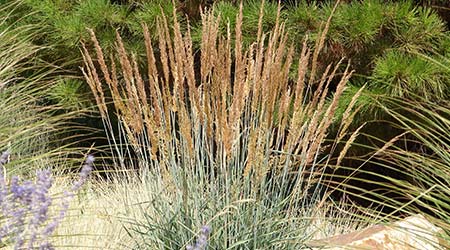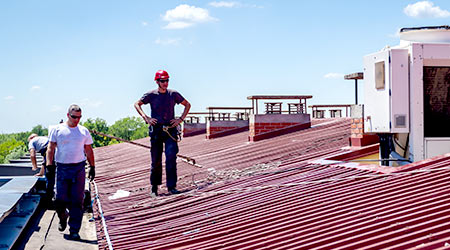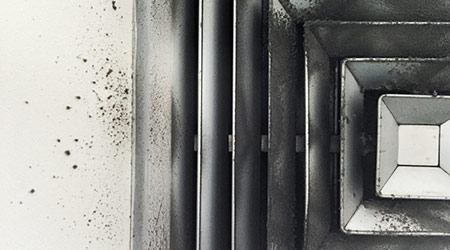
Turf Topic: Using Native Grasses in Landscapes
May 17, 2018
With summer right around the corner, grounds managers in commercial and institutional facilities are under growing pressure to ensure landscapes and turf areas around their facilities are healthy and attractive. One way for managers to achieve theses goals is to consider the use of native species of plants and trees.
Using native grasses can deliver benefits for new and existing facilities. Once the areas of native grasses are established, they will have thick surface coverage of healthy, green grass.
Maintaining these grasses is much the same as managing traditional turf grasses. Mowing and weeding these areas properly can provide long-term stands of these diverse, native grasses, according to a blog post from the Soil Science Society of America.
In areas that cannot be mowed, such as along stream banks and drainage areas, pollinators — bees, butterflies, beetles, and flies — can help keep the native grasses thriving. Those pollinators help fertilize the native species and keep them healthy throughout the year. Native species are also known to develop their own defenses against pests and diseases. The more diverse the vegetative community, the healthier the ecosystem will be for that area. Vegetation diversity creates habitats for a wide variation of soil biology, beneficial insects, and other wildlife species.
Incorporating native grasses into recently disturbed soil is not as easy as it sounds. These grasses require healthy topsoil to germinate.
Besides needing healthy topsoil, native grass species need adequate moisture to germinate and propagate the landscape. Many native grass species germinate in the early spring — March through mid-May — while others germinate in the cool season of mid-autumn — mid-September through October. During these periods, the soil temperatures are just right, and soil moisture is at the appropriate level. Native grass species will go dormant in the heat of the summer and during winter months.
Incorporating native grasses might require the use of tractors that drill grass seed into the desired areas to the appropriate depth. Covering this seed with straw will help the soil retain moisture that will be used later for germination.
The straw also keeps the seed from blowing away. It’s important to keep foot and vehicle off of these areas because they can be fragile and need time to germinate. Once native grasses emerge and are established on the surface, their maintenance is significantly less compared to areas planted with turf grass.
This Quick Read was submitted by Ryan Berlin, managing editor of Facility Maintenance Decisions.
Next
Read next on FacilitiesNet












